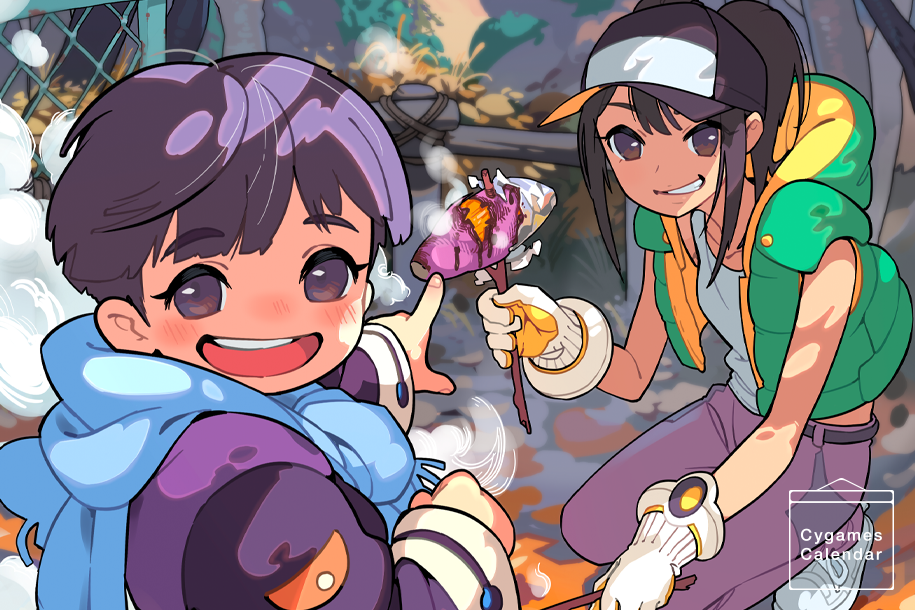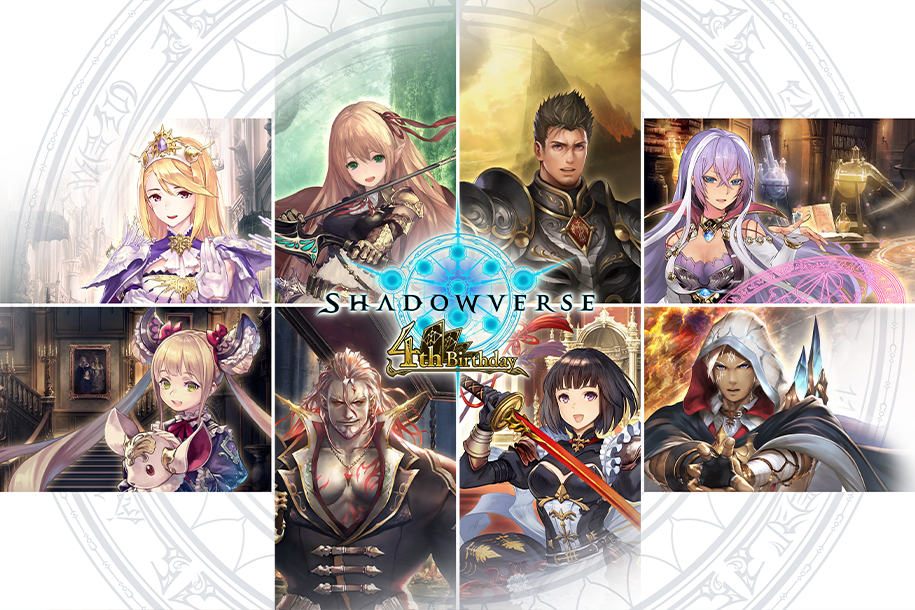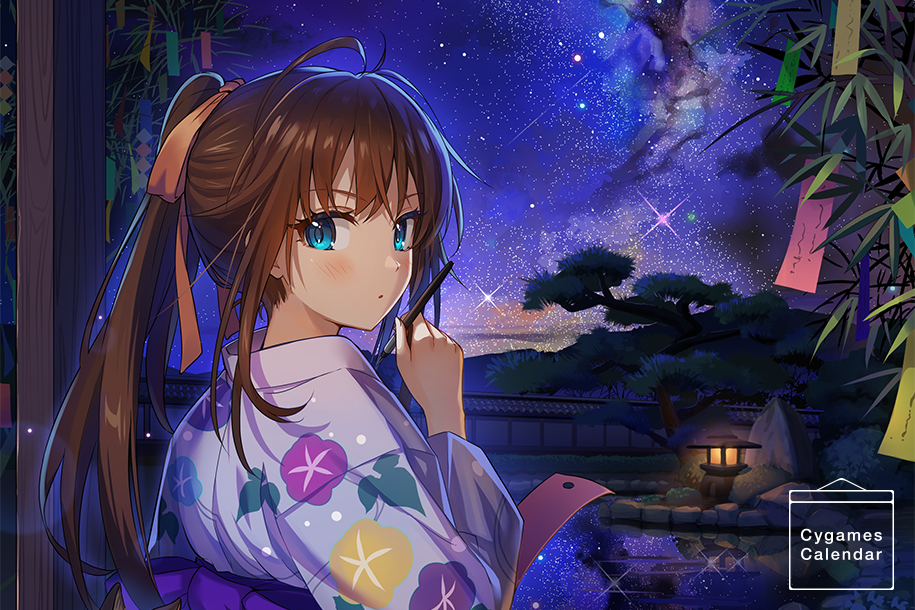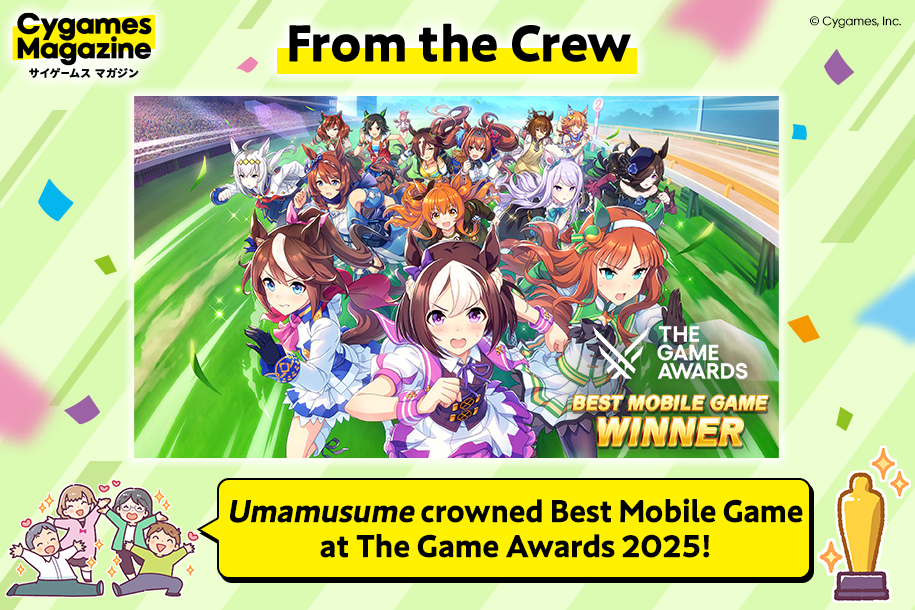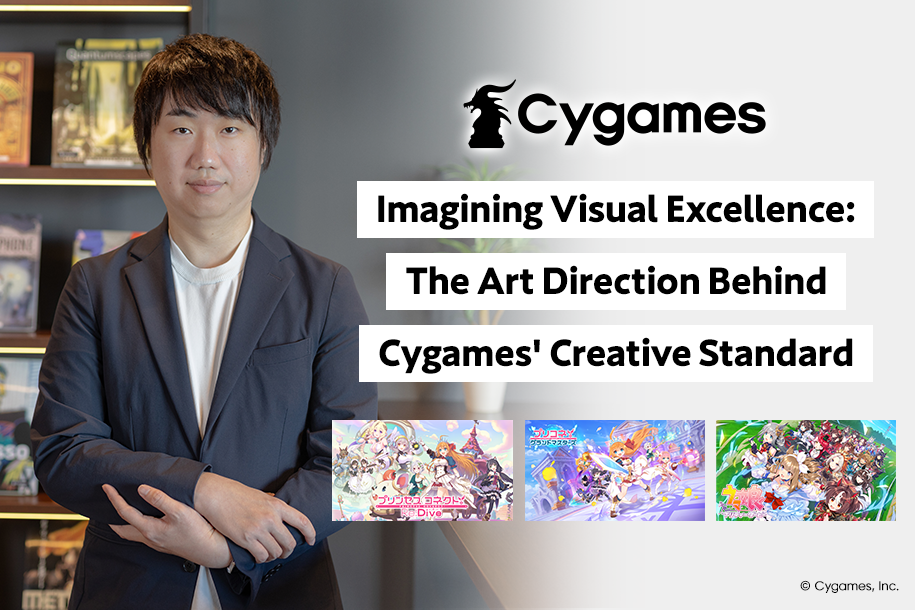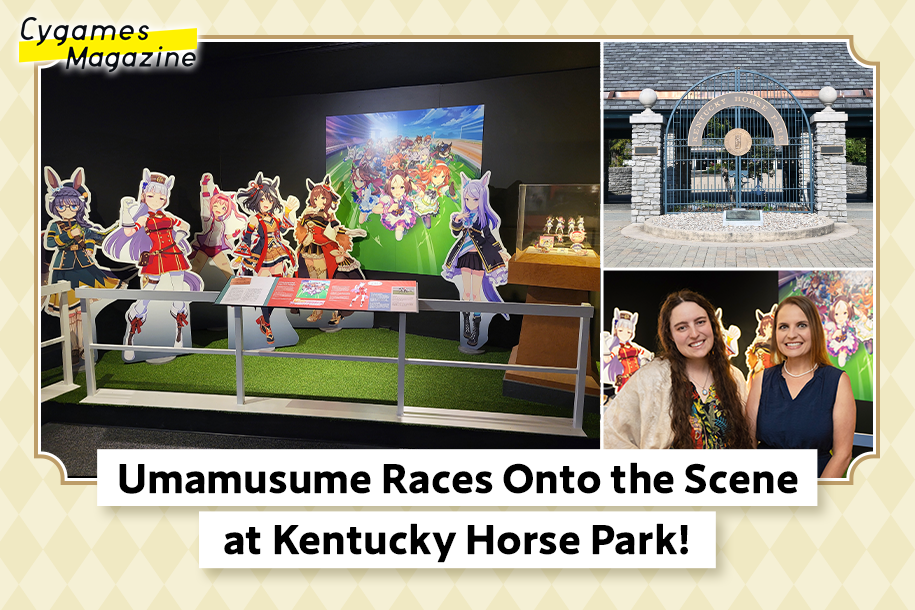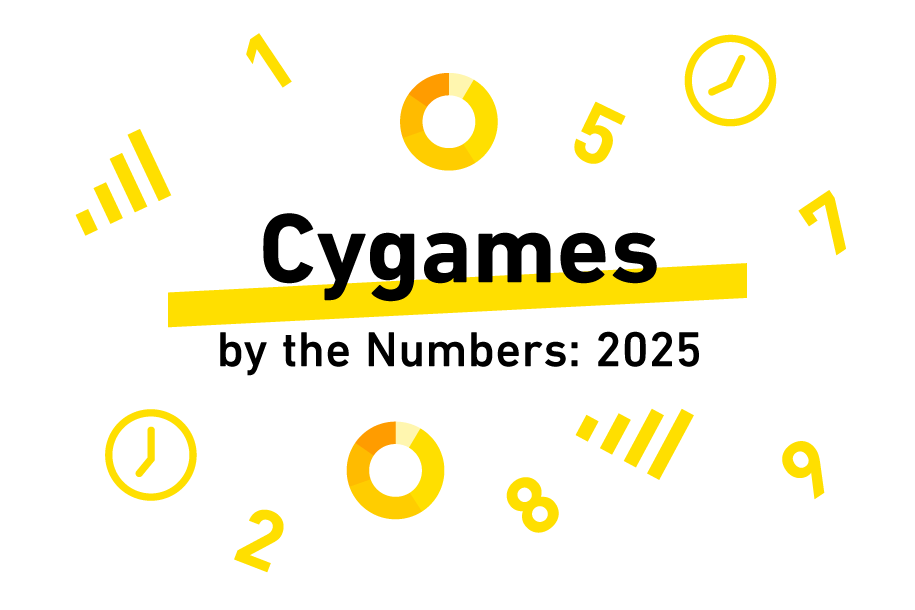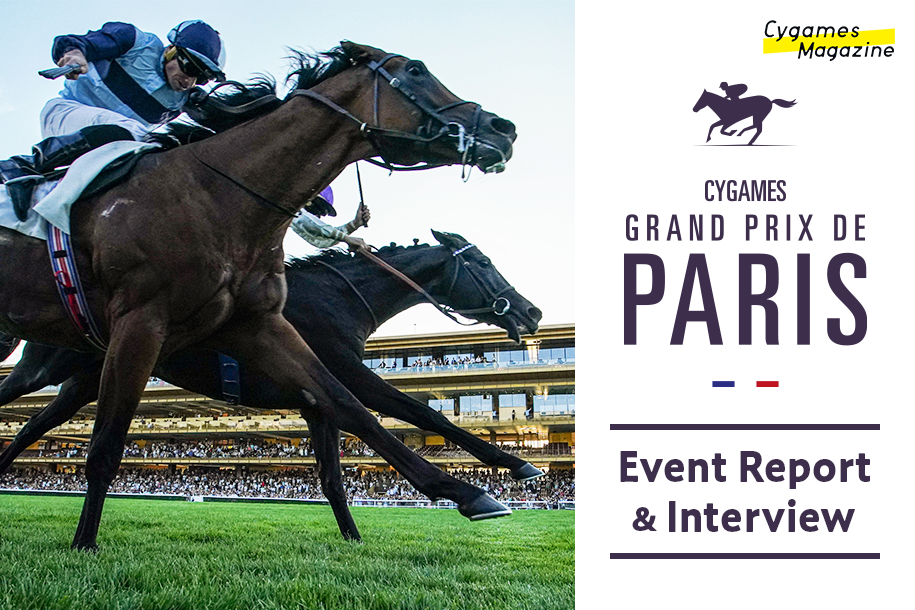Adorably Diminutive: Livening up the world of Princess Connect! Re: Dive
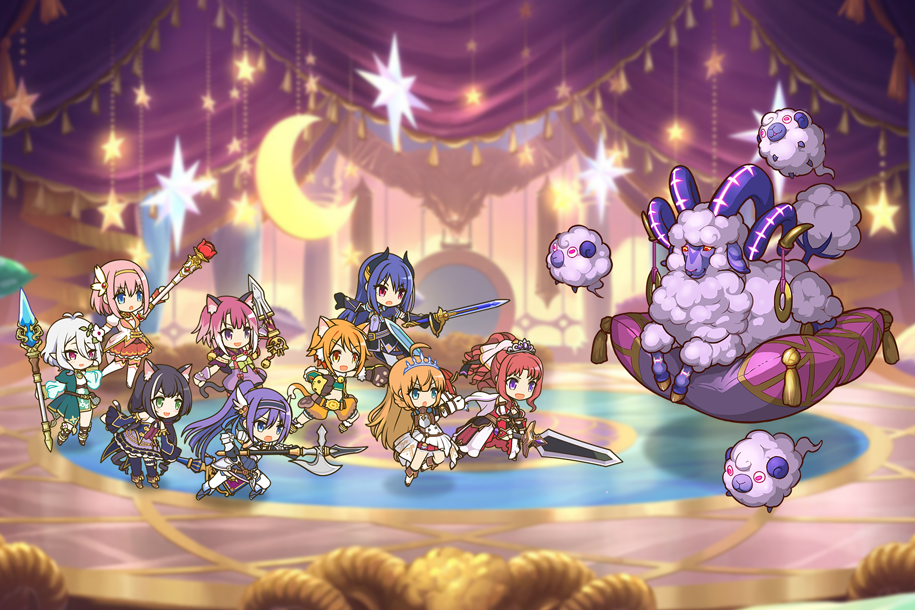
Princess Connect! Re: Dive (hereafter abbreviated as “Re: Dive”) boasts a wide variety of wonderfully unique characters, often drawn in the adorably diminutive chibi art style. We had a chat with the members of the content and interactive design teams about their creative process and the charm of this unique style, which they have continued to expand and play with over the years.
- Content Team – Specialistuki
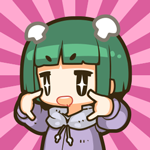
- Worked as a freelance illustrator before joining Cygames in 2014. Has served as designer and supervisor of the series’ chibi characters, in-game Guildhouse furnishings, and more, from the launch of the previous Princess Connect! project up to the present work, Princess Connect! Re: Dive.
- Interactive Design Team – Animation DesignerKazuki
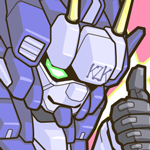
- Joined Cygames in 2016 with experience in a variety of fields, including video production and game machine development. Currently leads Princess Connect! Re: Dive’s animation design team.
How to design an adorable chibi while retaining the charm of the original design
Could you start by outlining the general process you went through when creating the chibi forms of Re: Dive’s characters?
uki: To create the chibi design, we first need to have an illustration of the character in proportion. Using materials provided by the writing team, the key animation division of the illustration team creates these proportional drawings for us. Then we in the content team use those images to create the chibi illustrations. Often this process naturally makes the character cuter overall, but we try to think about how we can emphasize the cuteness of the original design.
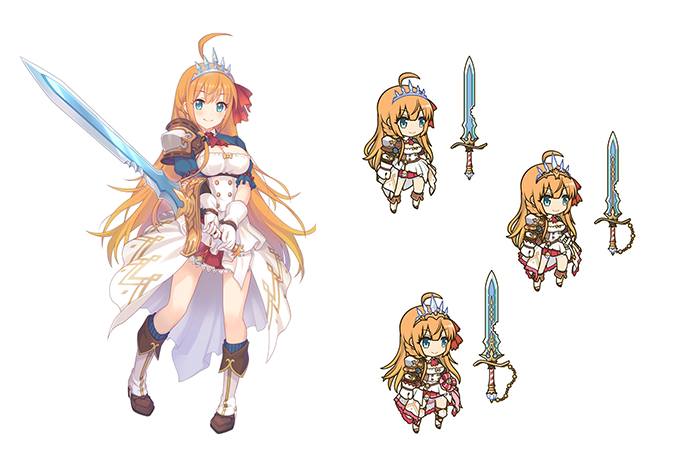
uki: You can’t see all of the little details from the front view. Since Re: Dive is an “anime RPG”, we have a wealth of character materials—the same as you would have when making an anime adaptation—which we can use to flesh out the back and side views for each character.
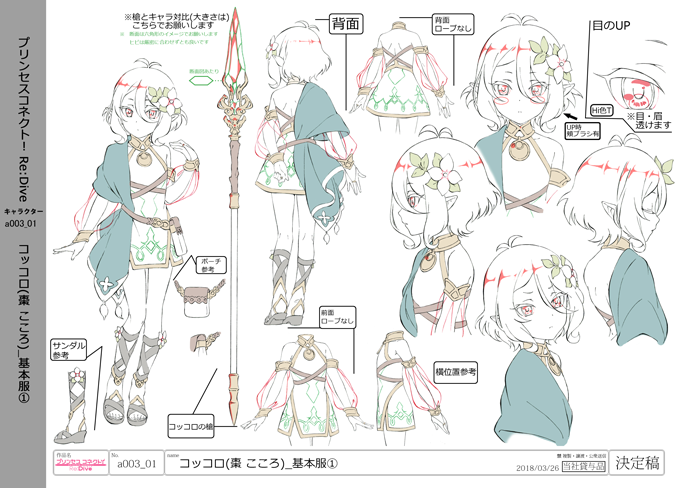
uki: The style of animation we typically use involves creating the base of the chibi character, followed by making the hands, feet, hair, and other elements so that they move individually. When the initial design is complete, we hand it off to the interactive design team so that they can attach the actions to it. After that, we add extra parts as the need arises. Some characters have ended up with more than several hundred detailed little parts to their design.
Kazuki: When we receive the base designs for the chibi characters, the animation designers in the interactive design team—including myself—go on to create all of the in-game character movements seen in battles, Guildhouses, and elsewhere.
When we’re adding these actions, we start with the storyboards we get from the planning team. These storyboards include all of the movements they want to see in the game, so we have a meeting with them to work things out. Sometimes adjustments are required in terms of what’s technically possible, or what we can do without interfering with the pacing of battle.
After that, we make a rough storyboard (with sketches this time) and touch base with the planners again, add the necessary edits, then send it to the director for the final check. Assuming there are no problems, we then clean up the storyboards and move on to creating the animation. The last step is adding the special effects, and once the director and art director have both given it their seal of approval, our work is done.
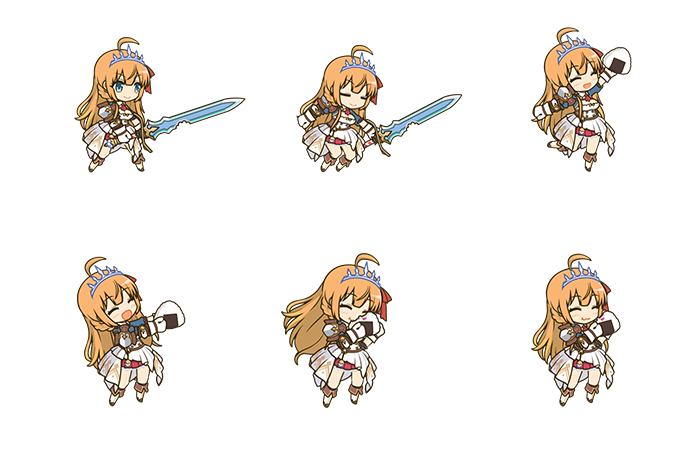
Wow! You get a lot of detailed feedback throughout the process of completing the actions, don’t you?
Kazuki: We do. Movements need to be added in a sequence, so getting our progress checked at key intervals helps drastically reduce the likelihood of having to retroactively fix things. If we ended up needing to add an extra part later down the line, for example, we’d have to get the content team to create it, which can be very time-consuming. We work hard to make sure that every step of the process leads smoothly into the next.
The director and art director handle most of the editing, but we get uki to take a look before it goes to them. He also worked on Re: Dive’s prequel, Princess Connect!, so he has extensive knowledge about the characters and the world.
uki: I give suggestions here and there about how to make a character’s pose or movement better suit their personality. The directors also have very clear ideas as to how each character should be, so we all exchange our opinions and work together to create the best final product.
Drawing out each character’s personality with animations colored by the setting and story
Now I’d like us to talk more about the characters. Are there any characters in particular who you’d like players to pay special attention to in terms of their actions or chibi forms?
uki: Ninon (Oedo) comes to mind. From the very beginning, since the inception of her design, we wanted to emphasize that she’s not a real ninja herself, but a girl who loves the idea of ninjas. A lot of her charm comes from her misconceptions about Japanese culture and the fact that she interprets that culture and ninjutsu to be one and the same. I think we managed to express her individuality, but I’m not sure if our idea behind the character was communicated as strongly. I really hope players take to her.
Kazuki: For example, when she uses her mid-battle skill, Ninja Arts – Shadow Clone Technique, she doesn’t actually clone herself, but just does a lot of rapid jumping from side to side. Oh, and when she uses her “vanishing technique” during her victory pose, the cloth is completely different from that of the background, so she’s not hidden at all (laughs). Then, in her Union Burst, the cut-in animation is of her doing ninjutsu hand signs, but she has the wrong idea about these, too, and ends up shaping her fingers into dogs and foxes like in a shadow puppet show. Essentially, we tried to incorporate a lot of cute and comical elements like these to build up her unique character.
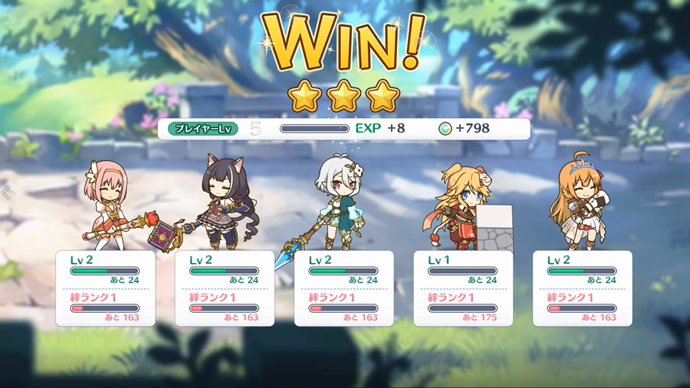
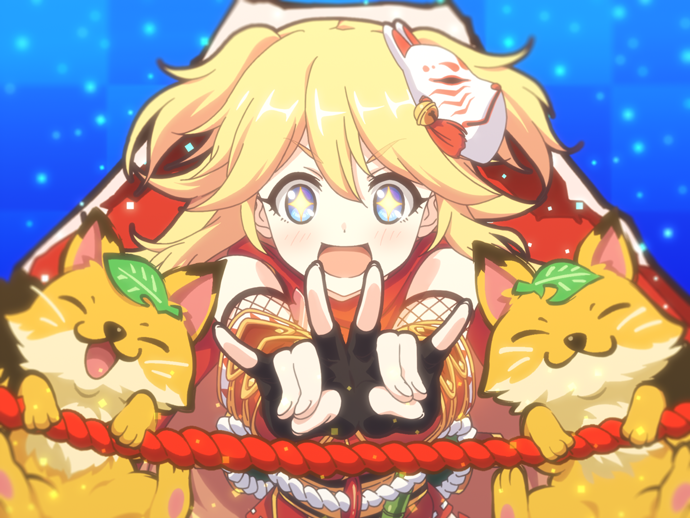
Kazuki: I’d also like to nominate Christina. She’s a special character from an in-game group called the Seven Crowns, and we’ve been discussing how we can distinguish her from the other characters since the moment of her creation.
We decided to achieve this by giving her unique battle actions. We also made her waiting pose during battle stand out by having her just stand there imposingly, and we took the animation for her kick attack from the scene in the main story where she burst through a wall.
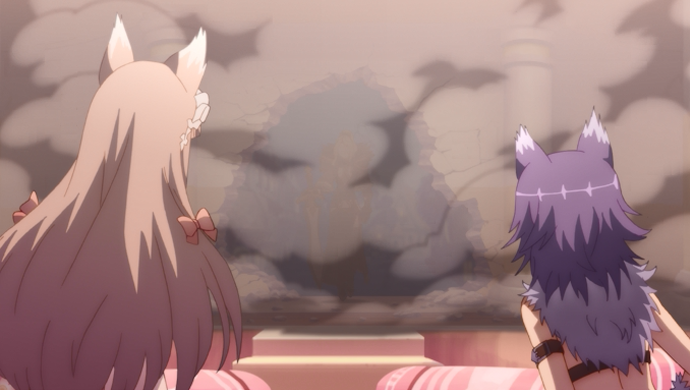
uki: Yeah, that ended up becoming one of her special actions. We didn’t have any chibi characters that moved like that until her, either, which I think added to the impressiveness of her animations. The content team also tweaked the parts of the design with incredible detail to make her movement really stand out.
We also intentionally gave the chibi versions of the other Seven Crowns members more decorative elements than other characters, to make them look suitably stronger. Take Christina, for example; her elaborate sword is emphasized just as much in chibi form as in her proportional illustrations.
Come to think of it, Jun (Summer) has a kick action as well, doesn’t she?
Kazuki: Right. That was completely intentional. Both Christina and Jun are members of the NIGHTMARE guild, so we wanted there to be some similarities between their movements as well.
uki: The kicks really made the battle scenes stand out, huh? I hope that the players will notice and appreciate how the characters’ actions are grounded in their relationships and backgrounds.
Are there any other animations featuring character backgrounds?
Kazuki: We incorporated Muimi’s background into her victory action. She normally has a very bright and energetic personality, but her victory action betrays a hint of sorrow in her expression and movements. She sort of clasps the brooch on her chest and stares off into the distance.
Her close companion from the prequel, Octo, has completely forgotten about her in this game. Muimi still treasures the brooch that Octo gave her, so we used this action to convey her feelings towards him.
uki: Then there are the twins, Yori and Akari, and Yui (New Year), Hiyori (New Year), and Rei (New Year). We gave the members of groups like these matching victory actions that link up in a sequence. I won’t name them all here, but I encourage players to try different combinations of party members to find them!
It sounds like victory actions are another method of drawing out each character’s individuality.
Kazuki: That’s right. The length of victory actions are somewhat limited, but we have a lot of freedom in terms of the range of motions we can use. We try to focus on including elements of the characters’ personalities that we couldn’t quite express during battle.
The animations have indeed become more varied and exciting. Neneka and Labyrista take out chairs and other props to sit down on, for example.
Depicting casual gestures and expressions; using chibi characters outside of battle
I’d like to hear more about the characters outside of battle. We see the chibi-fied characters moving around the Guildhouse, as well—is there anything in particular that you focused on there?
uki: We used the Guildhouse as an opportunity to show off the girls’ everyday behavior and expressions in a cute way.
During the battle, there isn’t room for comical expressions as the girls are fighting seriously. By contrast, the Guildhouse is a place where their individuality has a chance to shine, as each character has their own unique array of expressions. For example, they even interact differently with the furnishings based on their personality. We hope that these details will help players feel closer to the characters.
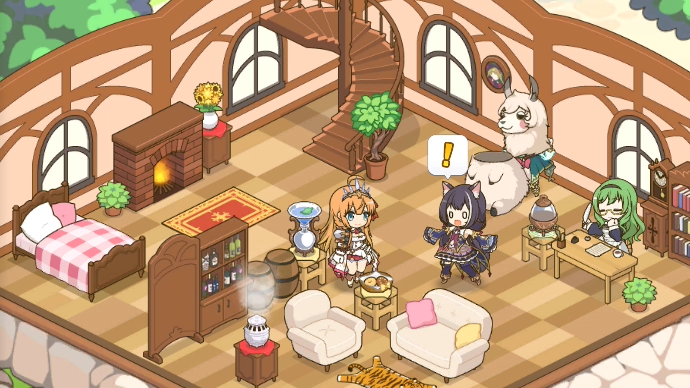
So the characters will display different and unique actions depending on the furniture? That sounds very cute! Could you give us your recommendations for furniture that will trigger cute animations?
Kazuki: Mine would have to be the Symphonic Star Stage. If you install the Symphonic Star Stage Main Unit and both of the Symphonic Star Stage Side Units, you’ll be able to see a special animation.
When the three members of the guild Carmina were first released, some people posted videos of the trio onstage. The animations aren’t limited to those three, but that image has stuck in my memory because it was nice to get a response like that from the fans.
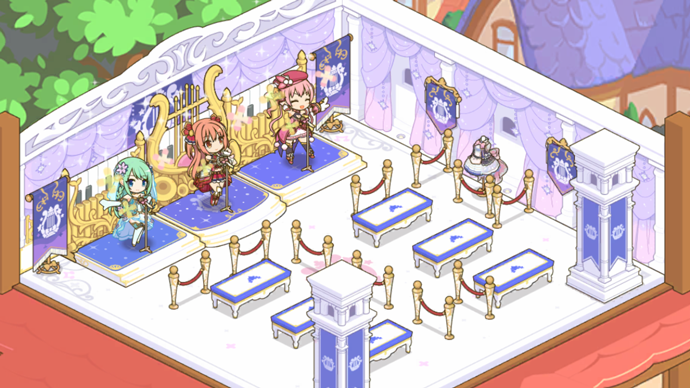
Kazuki: I’d also like to recommend the Lima Costume. Getting to see the characters jump into the fluffy costume and waddle around is simply adorable.
uki: I like the Mini Rocking Gryphon. It’s meant for kids, but seeing the older characters hop on it without a care in the world always cheers me up (laughs).
Well, it sounds like it’s worthwhile for players to try placing various pieces of furniture in the Guildhouse. Aside from the Guildhouse, I believe chibi-fied characters also appear in the minigames that take place during story events?
Kazuki: That’s right. For example, in Misato’s Summer Cheer! The Dream-Chasing Midsummer Nine (the story event that was held at end of July 2020), there’s a baseball minigame called Misato’s Fierce Batting Lesson! Home Run Drill. We aimed to create a relaxing minigame that could be played repeatedly without inducing any stress.
This minigame features eight characters, the largest number we’ve put in a minigame to date, and creating unique pitching and batting forms for each of them was quite a struggle. We wanted baseball fans to be able to enjoy it as well, and we hope players will give it a go from the Arcade Table in the Guildhouse.
uki: It also features some of the very few chibi-fied male characters in Re: Dive. We had to make adjustments to the design to emphasize their broader shoulders and more muscly thighs. It almost sounds like the term “minigame” doesn’t quite fit. There’s nothing mini about the scope of these projects, is there? (laughs)
Kazuki: True (laughs). A lot of effort goes into the minigames featured in story events, both technically and in terms of design. It honestly feels like everyone is having fun working together to develop minigames that we sincerely hope players will enjoy.
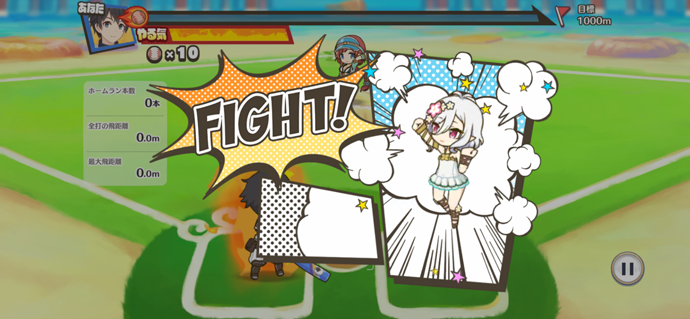
Taking away some features and emphasizing others; the secret behind chibi characters’ impactful designs
From what we’ve seen, the game is full of chibi-fied characters. How do you come up with all of their expressions and mannerisms?
Kazuki: We try to keep up to date with trending topics in games and movies as much as possible. We also use idol concerts as a point of reference, to help us depict Re: Dive’s cast of adorable characters.
If we do find an animation or action that interests us, we’ll play it in slow motion or frame-by-frame so that we can better understand and perceive the timing of the effects, the variation in the movement, and so on. There are so many videos available to watch online nowadays—we can observe the movements of animals and insects, too, to help clear up any doubts we have if need be.
uki: Adding movements is the work of the animation designers, but I work hard to ensure that my requests can be met. I try imagining how the Re: Dive characters would move and do “what if” drawings. Of course, part of the design process is researching how to create each element to show off the movement in the most appealing way.
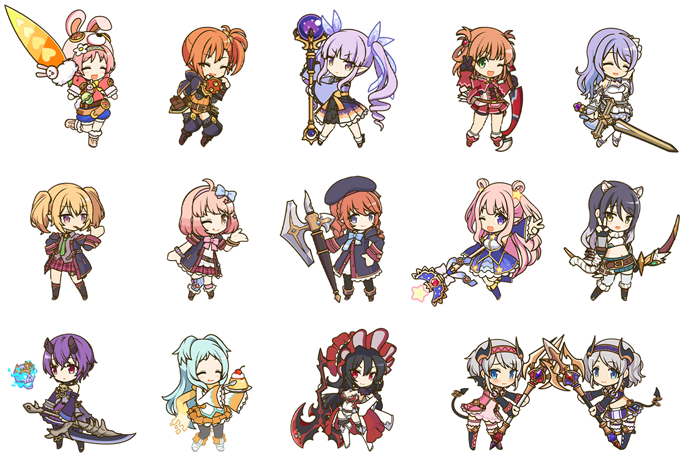
I’m sure the movements of the characters differ greatly between their proportional and chibi-fied forms. Are the former ever used as a point of reference for the latter?
Kazuki: They are, actually. After all, the chibi characters are based on the design of their proportional forms. As we recreate those movements in chibi form, we often have to substitute lively actions for more exaggerated ones—it’s vital we render the movements as smoothly and naturally as possible. Simplifying the movement while emphasizing a select few expressions is what allows us to create such charming chibi characters.
I see. It sounds like you draw inspiration from a wide variety of sources! Lastly, I’d like to ask about your goals moving forward.
uki: This is the second game in the series I’ve worked on, and I think we’ve improved significantly on the chibi character designs.
While I think we nailed the designs in the previous game, we had a lot more room to play with this time around in terms of how the characters were expressed. We were able to really build on the individual chibi designs, and for that, we had to consider how each character would move. So, going forward, I want to continue to prioritize the communication and cooperation between each team.
Kazuki: I want to keep working hard to create animations that bring out each character’s unique charm to their utmost potential, and that live up to the incredible work done by our talented teams of writers and artists.
The quality of motion animation is continuously evolving, so we want to keep focusing our efforts on creating an anime RPG that matches the quality of any other game out at the same time.
That’s it for our interview with the designers of Princess Connect! Re: Dive’s colorful cast of chibi characters.
It’s clear that each and every character is created with a lot of love and care, and it sounds like we can expect a lot more to come from Re: Dive’s adorably diminutive character lineup!
Other articles related to Princess Connect! Re: Dive
Q&A with the Princess Connect Re: Dive Art Team! Part 1: Always Be Playful! On the spirit of a creator and producing 120% quality works≫≫≫
A Behind-The-Scenes Look at Cygames Pictures’s Making of the Princess Connect! Re: Dive Anime! (Part 1) ≫≫≫
The reason Princess Connect R has such incredible audio & the high audio production quality that Cygames seeks to achieve. (Part 1) ≫≫≫



